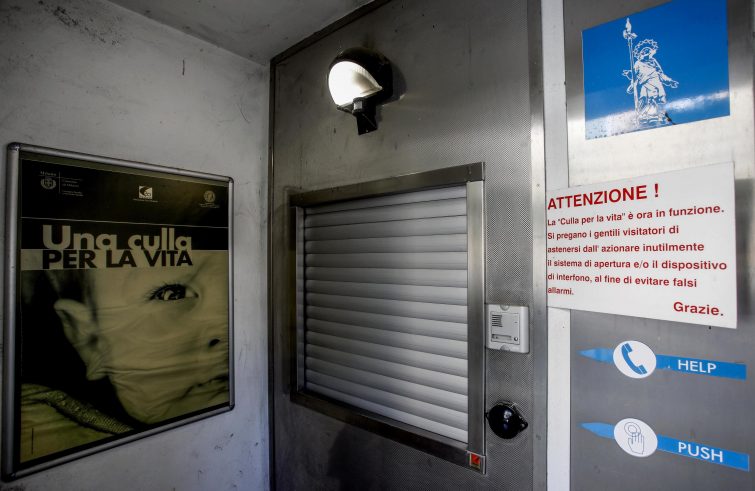
Newborn Aeneas, left by his mother at Milan’s Mangianalli Polyclinic ‘Cradle for Life’ a few days ago, has been attracting loving, passionate and prolonged attention. Another baby girl born in a warehouse in the Milan suburb of Quarto Oggiaro, was abandoned by her mother after the latter had made sure that the baby, still nameless, had received all the appropriate care. These both tragic and beautiful stories, evoke the astonishment enshrined in the renowned Talmud verses: “Whoever saves a single life saves the whole world”, while simultaneously serving as a reminder that each “child, born or not yet born, was created for one great thing: to love and be loved”. When reflecting on these two beautiful messages, one realises with shock how tragically different Aeneas’s fate might have been had that cradle not been there.
The cradles are a blessing, because they show that it is possible to go from loneliness to togetherness, from despair to hope: “If you, mother, are unable or cannot cope, we will take care of your baby. Do not fear. Your newborn child is precious to us. He or she will be welcomed and loved!”
This is the meaning of the Cradles. Goodness knows what the mothers of these little ones have been through, or what drove them to part with their babies. Who knows the conditions under which they gave birth and why they did not give birth anonymously. The one sure fact is that they loved their children: they brought them into the world. Aeneas’ mother has given him a name, and left a note near him saying “my mother loves me but she cannot take care of me.” The mother from Quarto Oggiaro, while allowing her identification, refused to recognise her newborn baby girl. Still, neither case was a ‘child abandonment’. However dramatic, theirs were not acts of ‘refusal’ but of ‘reliance’, of trust in other people’s solidarity, a request for protection and care. “Cradles for life. Happy to be born” is Rosa Rao’s new book, published by the Pro-Life Movement. This thoroughly researched volume chronicles the story of Cradles – a modern version of what were once the so-called ‘Foundling wheels’ – with updated numbers and data. For example, it reports that the Cradles, found in various sites in Italy, have welcomed 13 newborn babies to date.
But the importance of the Cradles extends beyond the numbers. Their very presence, their silent visibility, symbolises hope and acceptance, they represent society’s welcoming embrace, and have probably given mothers the courage to accept their babies in their wombs.
The Cradles, these monuments to life, serve as a reminder to reflect on the multitude of children who are denied birth! Children that society does not want to see, discarded in the name of spurious rights and a tainted idea of freedom. Yet society exists also for them and for their mothers. These unborn babies “are children of the whole of society. Their killing in huge numbers, with the endorsement of States, is a serious problem that undermines the foundations of the construction of justice, compromising the proper solution of any other human and social issue.” (Pope Francis, February 2, 2019). Aeneas and all the other newborns who, like him, were placed in their cradles, were they not – in their unrepeatable uniqueness – in their mother’s womb just a few hours earlier? And, a long time before, were they not the same ones whose existence began in that big bang called conception? The Cradle for Life is a silent plea for the whole of society to become one big cradle of life also prior to birth. Life Help Centres, “SOS Vita”, the Gemma Project, and the Shelter Homes have paved the way, and they keep it wide open. It would be a beautiful thing if the whole of society, including the world of politics, were to follow this path, to ensure that the caring, passionate and prolonged attention rightly poured out to baby Aeneas today may become a welcoming gaze permanently directed towards unborn children and their mothers.
(*) President of Italy’s Pro-Life Movement









